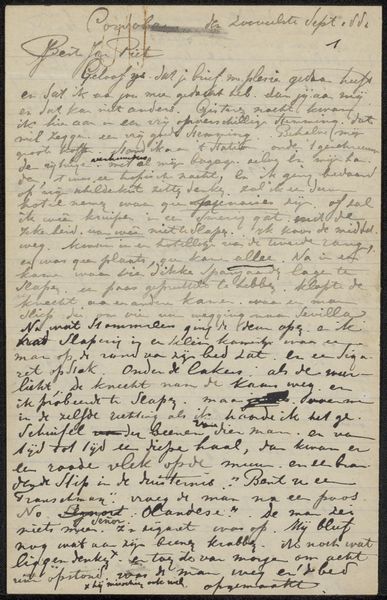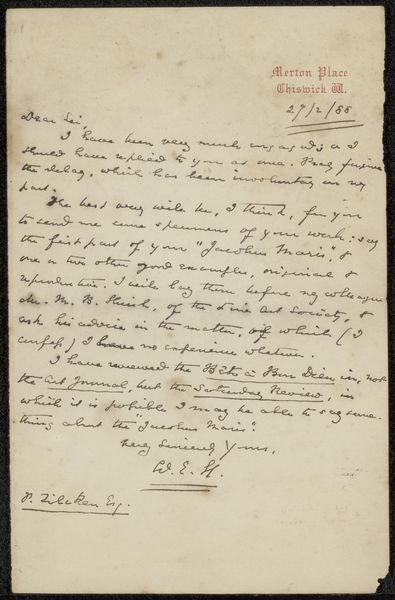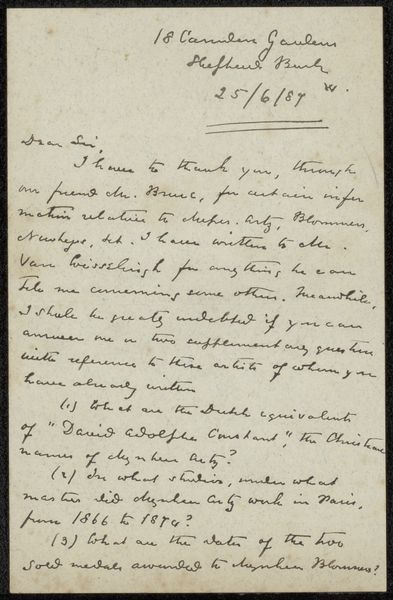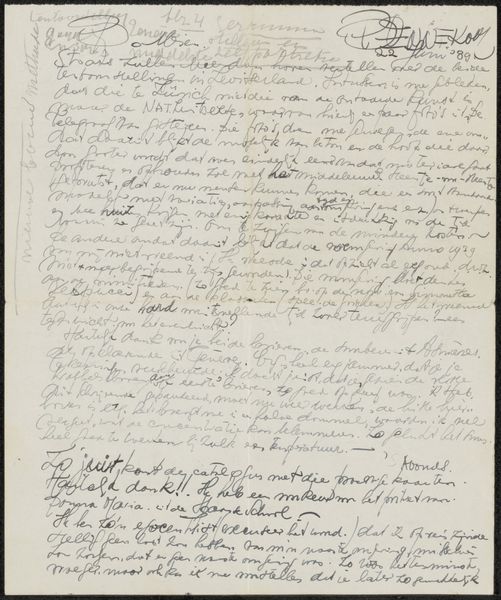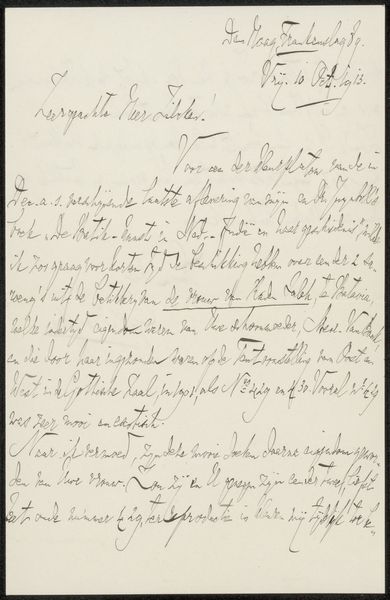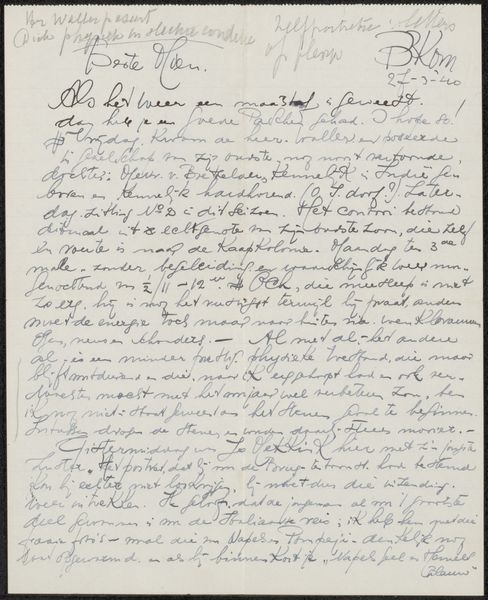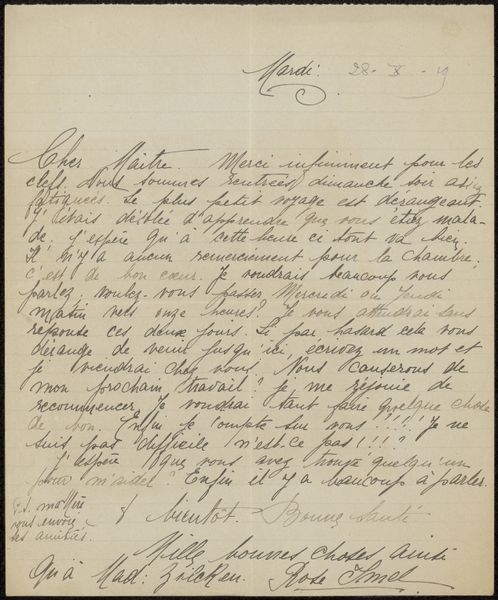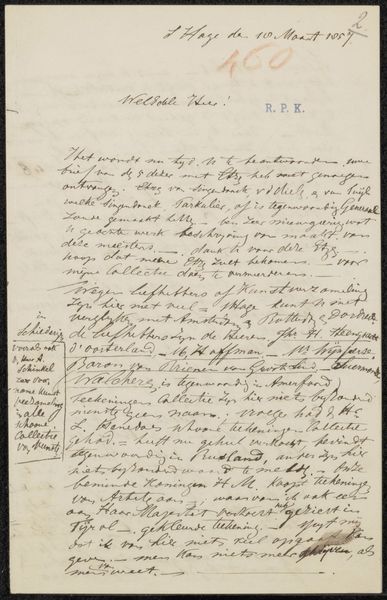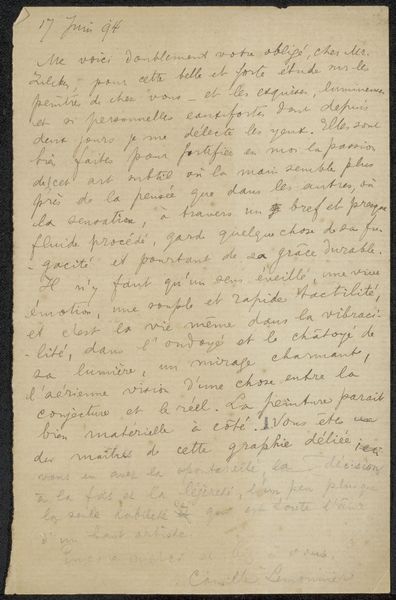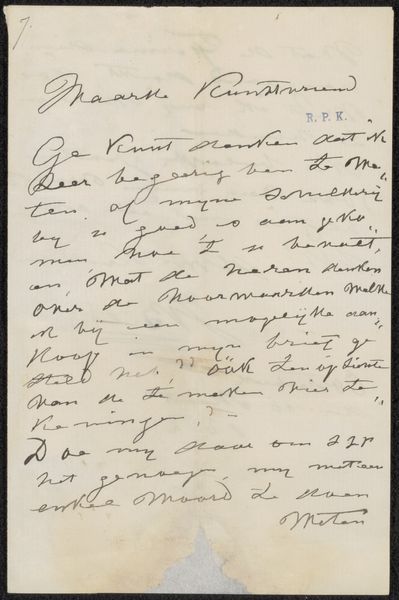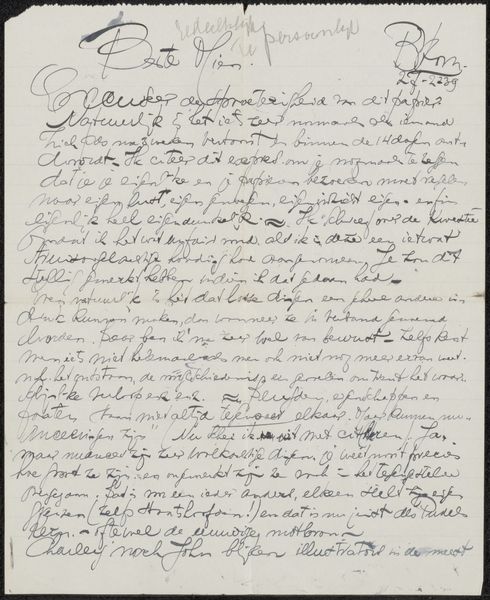
drawing, paper, ink
#
portrait
#
drawing
#
hand-lettering
#
hand lettering
#
paper
#
personal sketchbook
#
ink
#
miniature
#
calligraphy
Copyright: Rijks Museum: Open Domain
Editor: Here we have "Brief aan Chap van Deventer," which translates to "Letter to Chap van Deventer" by Jac van Looij, likely from 1884 or 1885. It's an ink drawing on paper, essentially a handwritten letter, which is interesting in itself. I find the intimate scale of the letter and the hand lettering quite captivating, it feels very personal. What stands out to you? Curator: What I find compelling here is precisely the means of production and distribution of knowledge at the time. It's not just the *content* of the letter that matters, but the very act of physically writing and sending it. The labor involved, the specific ink and paper chosen, the *hand* that formed those letters, and the postal systems required to move it – these all point to specific socio-economic conditions and challenge our modern understanding of instant digital communication. Consider how drastically different the act of communicating such information is today. Editor: That's an interesting perspective. It shifts the focus from the personal sentiments within the letter to the mechanics of its creation and delivery. So, you’re seeing the letter not just as a message, but as an object of labor? Curator: Exactly! We're examining the materiality of communication. The ink itself – where did it come from, who produced it? The paper, likely rag paper, reflecting a specific manufacturing process. And of course, Van Looij’s handwriting itself. How skilled was he as a calligrapher? What kind of training would that have involved? These aren’t simply aesthetic choices; they’re embedded in a wider network of production, skill, and consumption. It challenges our preconceived notions about high and low art. Editor: That does change how I see it. Now, I’m wondering about the recipient and their relationship – was this a form of keeping in touch, of establishing networks or support among artists at that time? Curator: Precisely! It opens the door to understanding the social contexts around artistic production. Instead of simply focusing on Van Looij’s individual genius, we're situated to understand networks of support and correspondence between individuals such as Chap, a journalist friend, and himself. Editor: So it's like examining the infrastructure behind the art itself, uncovering the hidden processes and relationships that made its creation possible. Curator: Precisely, a look into art’s production rather than simply its aesthetic qualities.
Comments
No comments
Be the first to comment and join the conversation on the ultimate creative platform.
